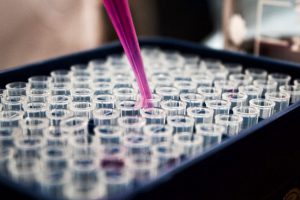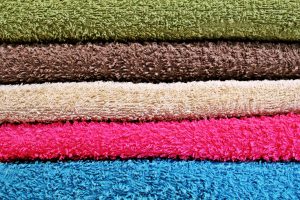The Biology and the Built Environment Center (BioBE) is currently seeking a post-doc to investigate fundamental questions surrounding the role of microorganisms (bacteria, viruses, fungi archaea, and protists) in the built environment and in relation to human health outcomes. Learn more and apply here. (https://careers.uoregon.edu/en-us/job/527294/post-doctoral-scholar-in-microbial-ecology)
We are pleased to announce the publication of our manuscript titled “Modeling microbial growth in carpet dust exposed to diurnal variations in relative humidity using the “Time-of-Wetness” framework” in the journal Indoor Air. This work is a culmination of research investigating how changes in relative humidity impact microbial growth in carpet dust. Our related study …
Carpets are a favored flooring type. They can be soft, cozy, and warm – and help with keeping noise levels down. Carpet can even help prevent injury. While these attributes are well recognized, what is less known is how carpet compares with other flooring types in affecting your indoor environmental exposures. To help address this …
We are excited to announce that our paper titled “Degradation of phthalate esters in floor dust at elevated relative humidity” was recently published under the Emerging Investigator series in the journal Environmental Science: Processes & Impacts. This is effectively the third paper in a series exploring microbial …
How microbial profiles differ between water-damaged and dry buildings is not well known. It’s only logical that where moisture is available indoors, microorganism will grow. Yet, measured microbial products do not show consistent differences between wet and dry homes. Because wet homes are associated with a variety of health risks, it’s important to identify the …
Spore-forming bacteria survive on surfaces coated with antimicrobial, latex paints Antimicrobial paints kill most bacteria within 24 hours, but some survive Such products are typically tested on pathogens but not common bacteria like Bacillus Antimicrobial paints could favor antibiotic resistance — making harmless bacteria like Bacillus harmful EVANSTON, Ill. — Antimicrobial paints offer the promise of …
The initial discovery of microorganisms by Robert Hooke and Antonie van Leeuwenhoek in the mid to late 1600’s was an exploration of wonder. The two were some of the first to visually journey into the microscopic realm with the aid of simple microscopes. They turned their gaze to the ordinary spaces around us. Pouring into …
The Alfred P. Sloan Foundation has approved a grant to host a workshop on viruses in the built environment. Building on the success of the foundation’s Microbiology of the Built Environment program, the workshop will convene researchers from academia and government agencies to address questions about the viral community and its dynamics in the built …
I recently spent a weekend visiting a friend out of state and quickly came to realize that he rarely washed his hands. Before eating? No. After the gym? No. Even after going to the bathroom…and not just urination. No washing! I was disgusted and could not convince him of the same. How could an educated …
This week Radio Joe was live from beautiful Boulder Colorado and Colorado University at the 5th SLOAN Microbiology of the Built Environment Conference. The conference is a gathering of the leading researchers in the world that study the microbiome of the built environment. A diverse group of scientists from around the world have been meeting …




